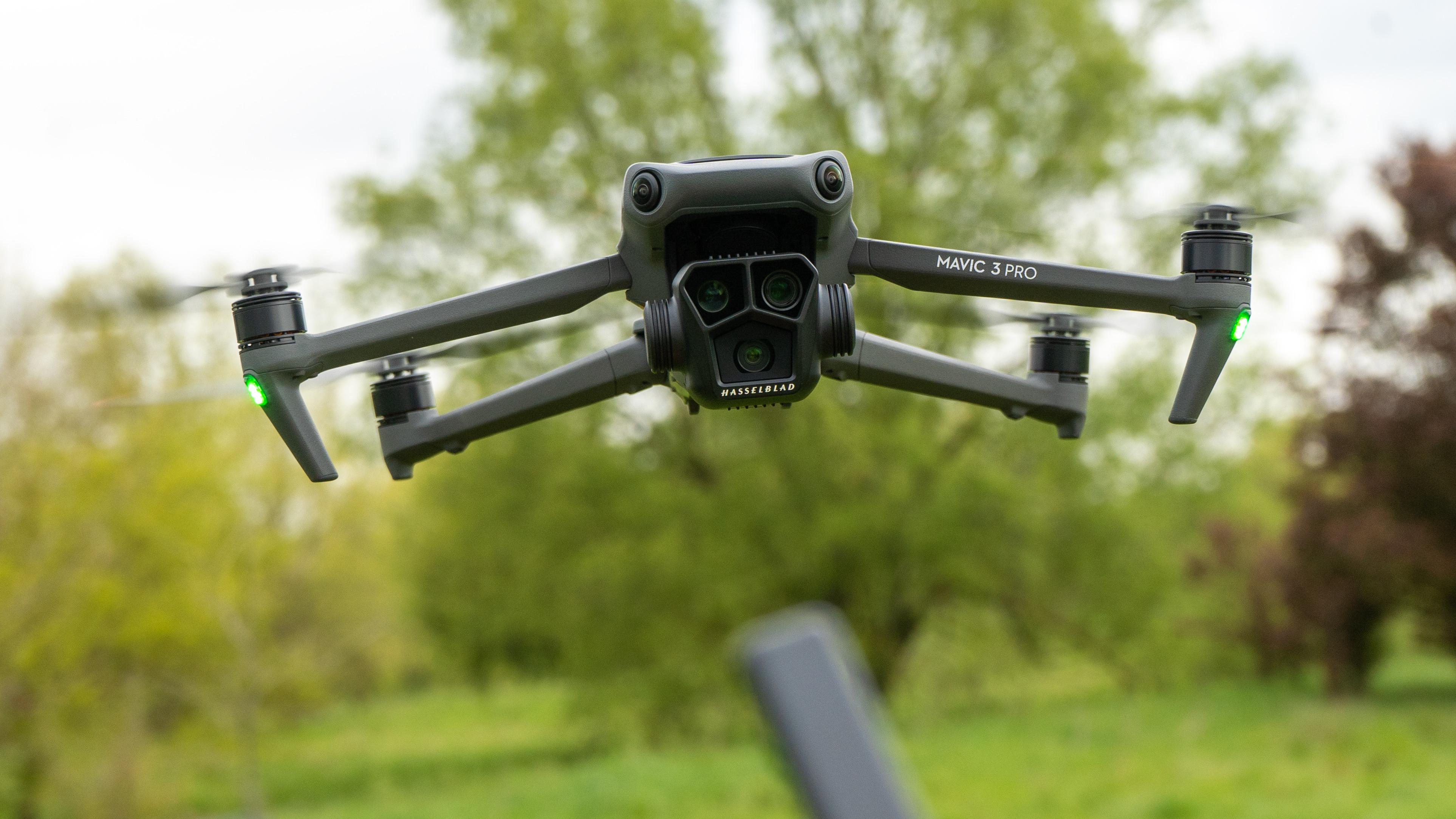
When DJI first teased the announcement of what we now know as the Mavic 3 Pro, they used the phrase 'Inspiration in Focus.' We thought that might be code for "A DJI Inspire 3, but one that you can actually afford."
Why? Because the previous Inspire 2 came in two editions, a cinematographer edition with SSD recording in the five-figure price bracket and a much cheaper version not much more than Mavic 3 Pro.
What made that drone special at the time was the ability to swap lenses, even to add a zoom, but the multiple cameras solve that, while the Cine edition of the Mavic 3 series (and there is a Mavic 3 Pro Cine too) mean long shots are available to creatives – assuming the camera is good enough.
Moreover, the Inspire 2 wasn't especially practical. The Mavic 3 sits at the top of DJI's consumer/prosumer range, and at nearly 1kg it requires registration in most places but is still light and portable, and quick to use. While other drones have targeted zoom improvements as an inspection tool, the Mavic 3 Pro clearly targets photographers and videographers.
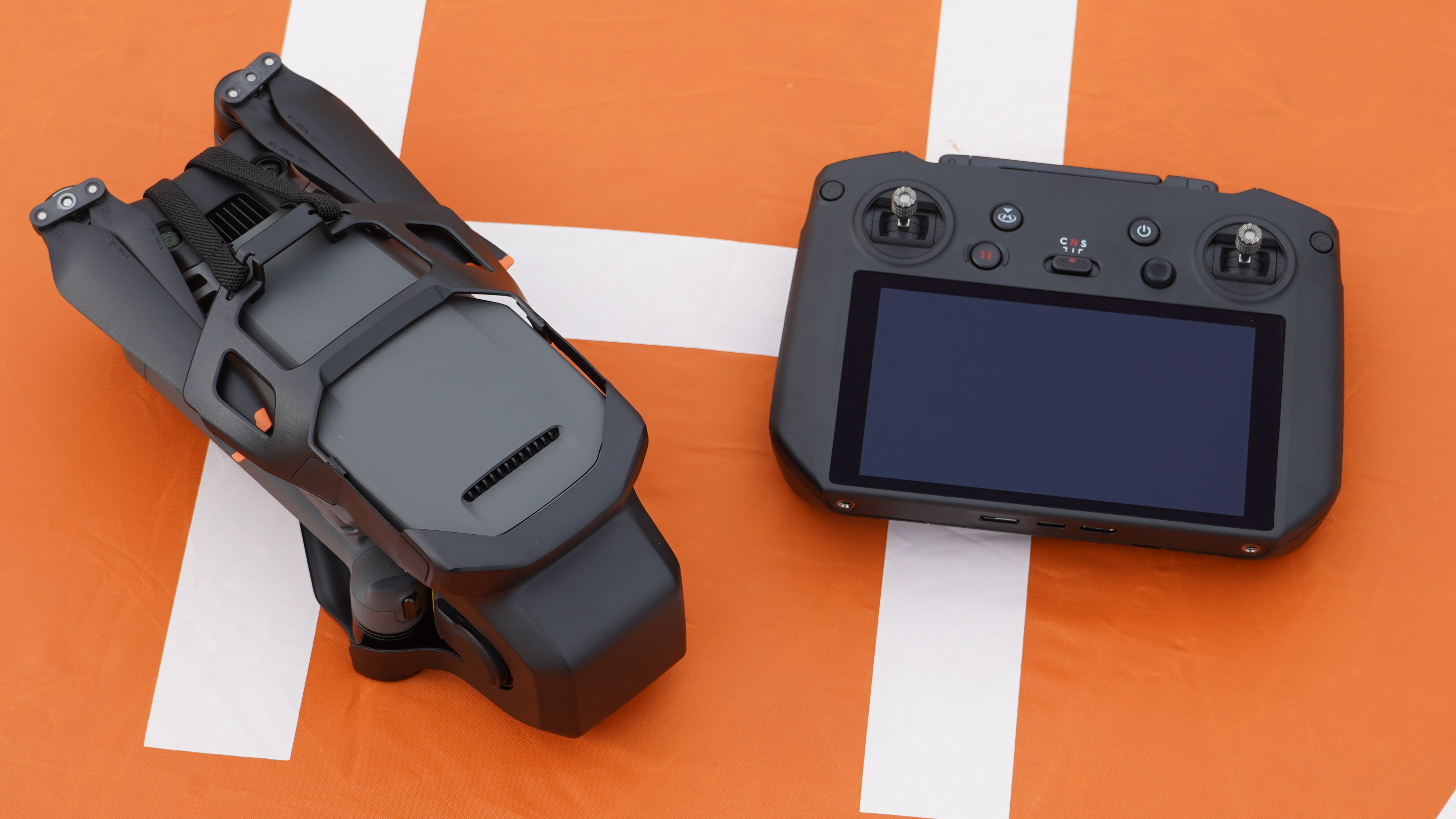
Specifications
Wide camera spec: 4/3-inch sensor, 20MP, 24mm EFL, f/2.8-f/11
Wide camera video: 5.1K 50fps, 4K 120fps, 1080P 200fps
Medium (3x) camera spec: 1/1.3-inch, 48 or 12MP, 70mm EFL, f/2.8
Medium (3x) camera video: 4K 60fps, 1080 60fps
Tele (7x) camera spec: 1/2-inch, 12MP, 166mm EFL, f/3.4
Tele (7x) camera video: 4K 60fps, 1080 60fps
Color modes: HNCS (1x cam), D-Log (1x), D-Log M (1x, 3x), HLG (1x, 3x), Night Video Mode (1x)
Flight time: 43 minutes
Range: 15Km / 9.3 miles
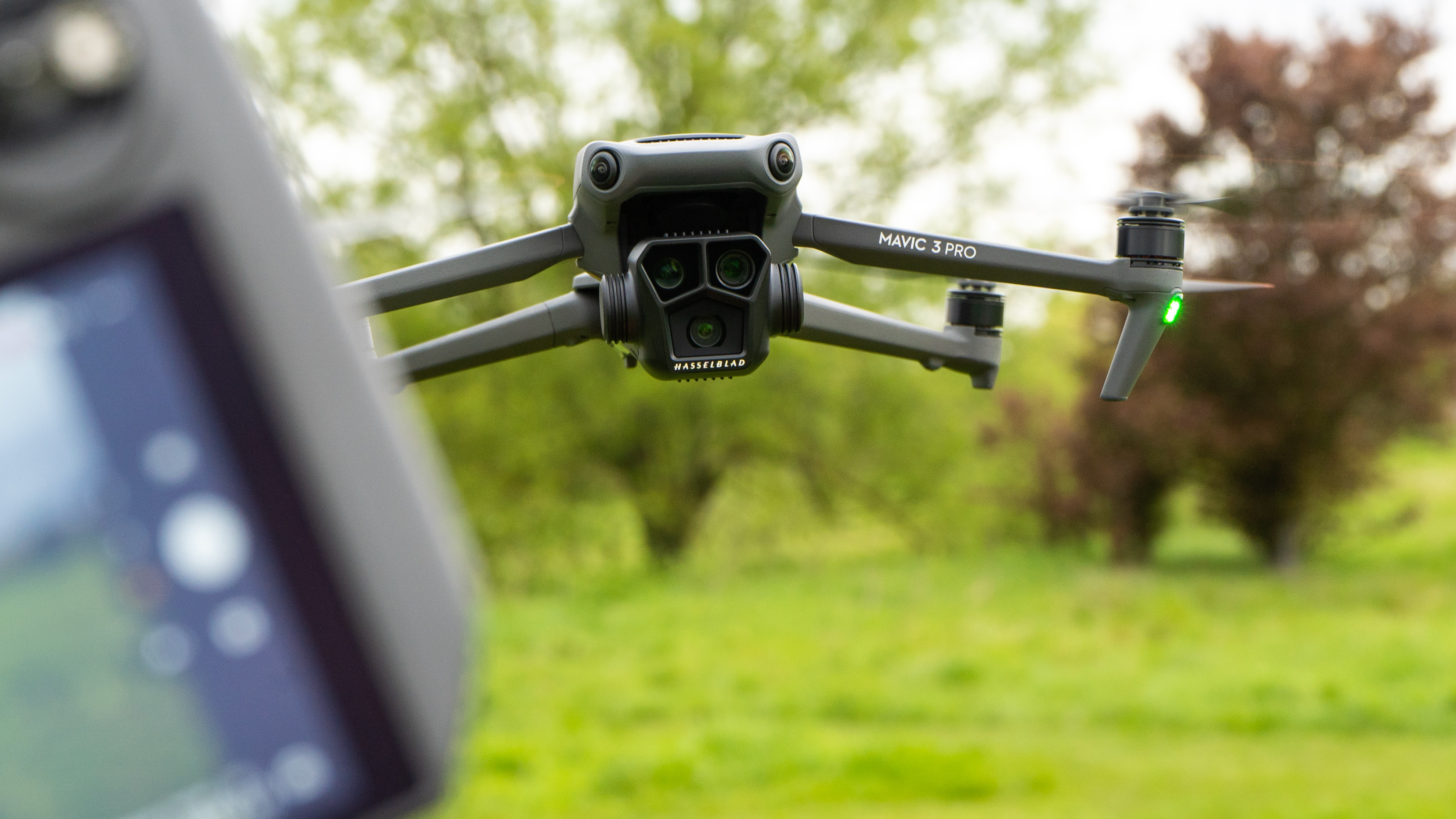
Key Features
The Mavic 3 Pro's stand-out feature is a triple-camera system which replaces the dual-camera system seen on the original Mavic 3. It is operated using a single tap to switch between cameras (1x, 3x, 7x), a little like the iPhone camera tool.
It can also be used as a pinch-to-zoom hybrid with digital zoom up to 28x in a separate searchlight mode. The long digital zoom is suited to inspections, but the optical lengths are ideal for photographers and videographers. The main 24mm EFL lens can handle low light thanks to its 4/3-inch sensor and 20 megapixels, and churn out 5.1K video at 50fps, or 4K at 60fps. In slow-motion mode, it can even manage 4K 120fps.
The drone features all-round collision detection and the ability to track moving subjects and avoid obstacles, which is nothing new to DJI but (Inspire 3 aside) is at its most sophisticated on the Mavic 3. The 43-minute battery life comes from the same battery shared across the Mavic 3 range (including the Enterprise models).
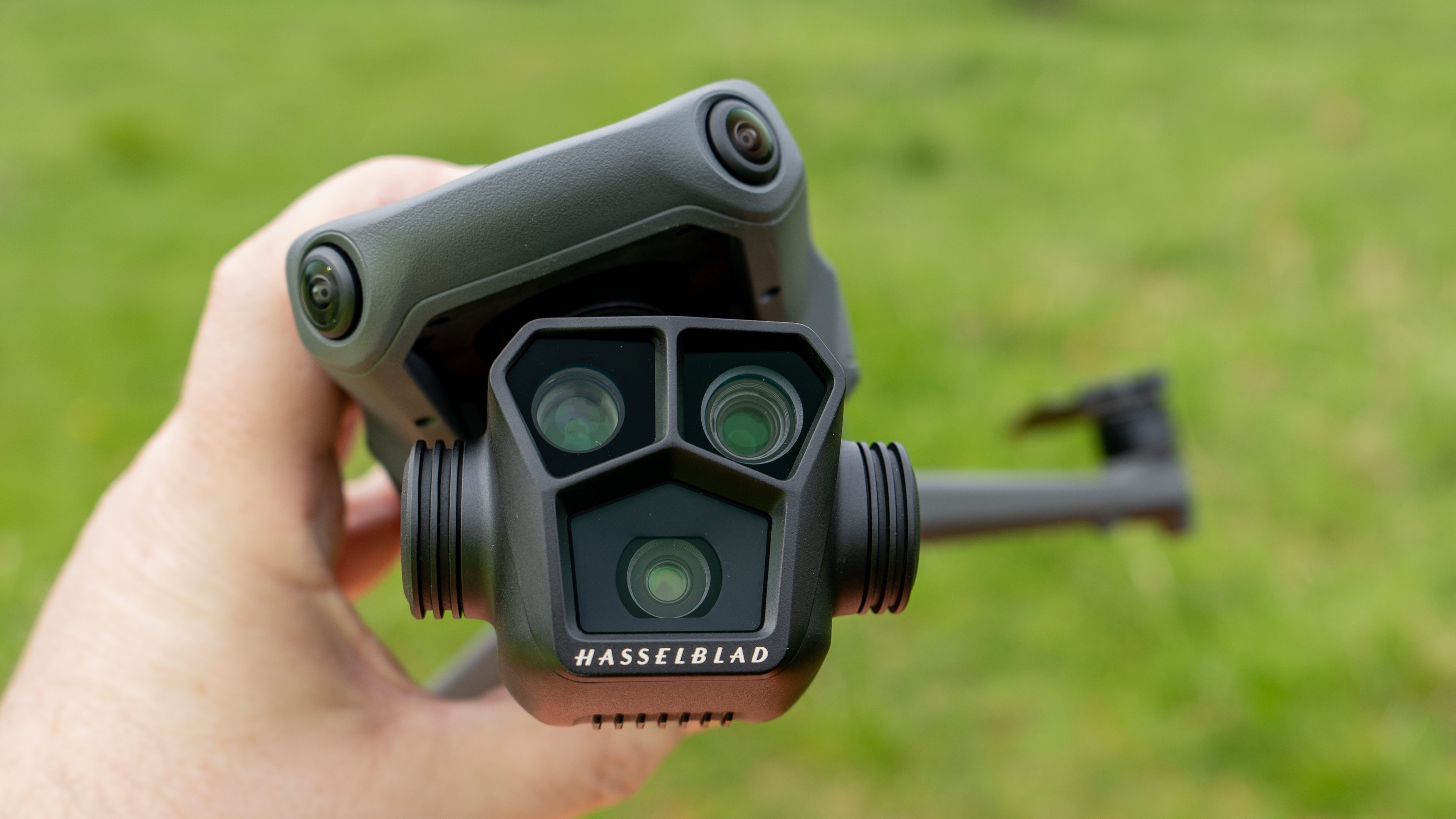
Build & Handling
If you've encountered either of the other Mavic 3 drones, then the airframe holds no surprises. It is solidly built, with a chunky gimbal under the front where the triple-camera unit lives. The build is, for the most part, hard plastic with a texture that makes it easy to grip. At the base, a metallic chassis surrounds the downward-facing sensors. It feels great in the hand.
The fold-out arms look thin, but they're not flimsy. Folded out (in the correct order) and the drone can take off from anywhere in around a minute. Control is via an improved version of DJI fly, either in a DJI RC with a phone or in one of DJI's Android-based Pro controllers.
The Mavic 3's connectivity is all at the rear. There is a USB-C port that can be used for connectivity and to charge the battery, which slides out the back. The MicroSD card slot hides next to the USB-C under the same rubber door (close enough that you won't be able to swap cards while charging!)
Travel is facilitated by the same clasp-style protective case seen on the earlier Mavic 3 (except the Enterprise models). That's great as it covers the propellers as well as the drone.
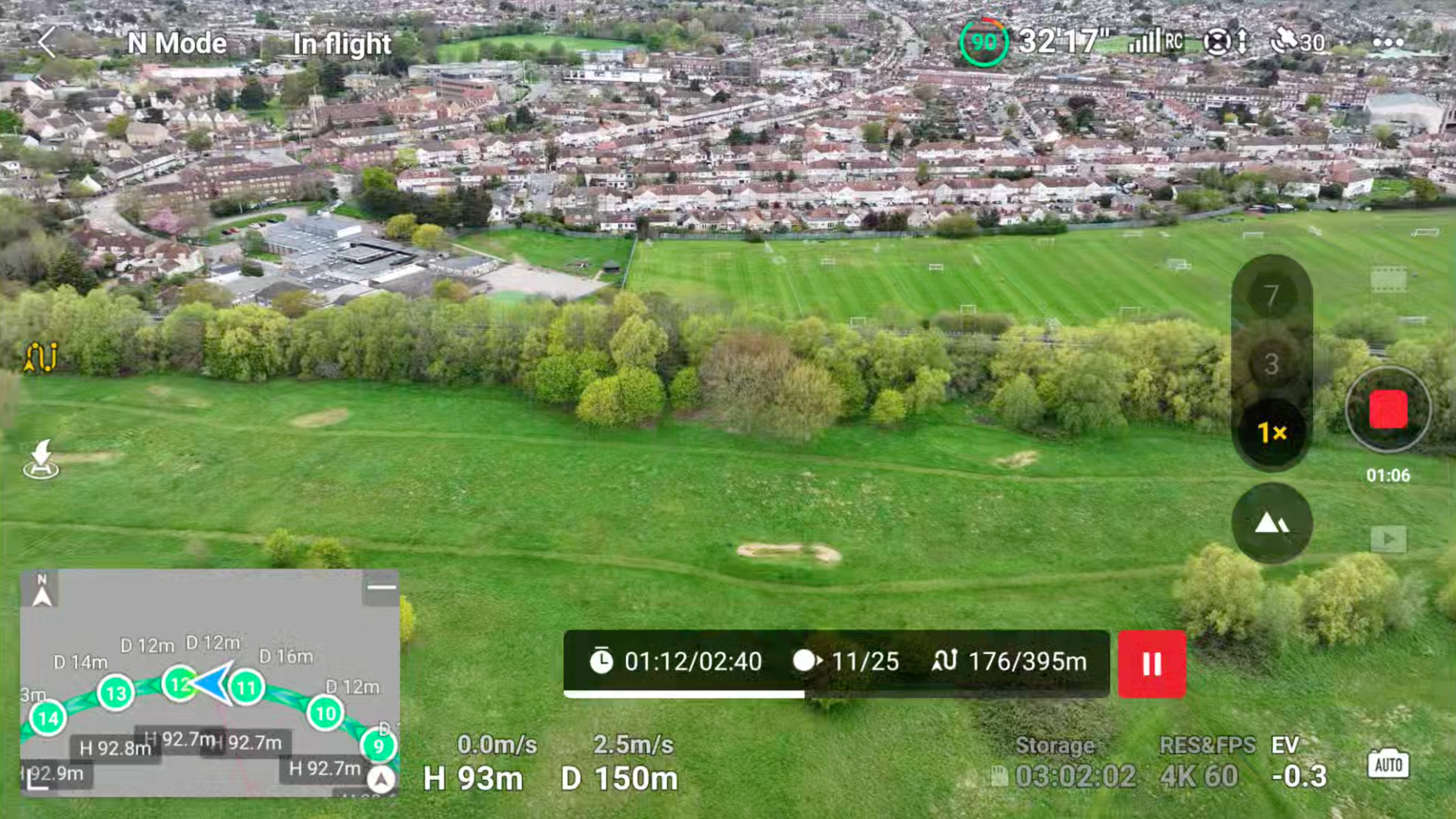
Smart Features
DJI has lost a bit of its edge when it comes to smart features and, more, we suspect, out of choice than anything else. In the early days waypoints – the ability to set points and have the drone move between them automatically – was a common feature but it has all but disappeared on consumer drones (though it is certainly there on the Enterprise models).
In our review of the Skydio 2+, a drone most noted for collision avoidance, we also noted the features which were added for cinematography, most notably repeatable flight paths. While the Mavic 3 Pro hasn't caught up with the Skydio's close-up action following flight AI, the waypoint feature does offer a lot of creative possibilities in terms of repeatable flights; you can record a mission and fly it over and over in different conditions, then edit them together months later with elegant transitions.
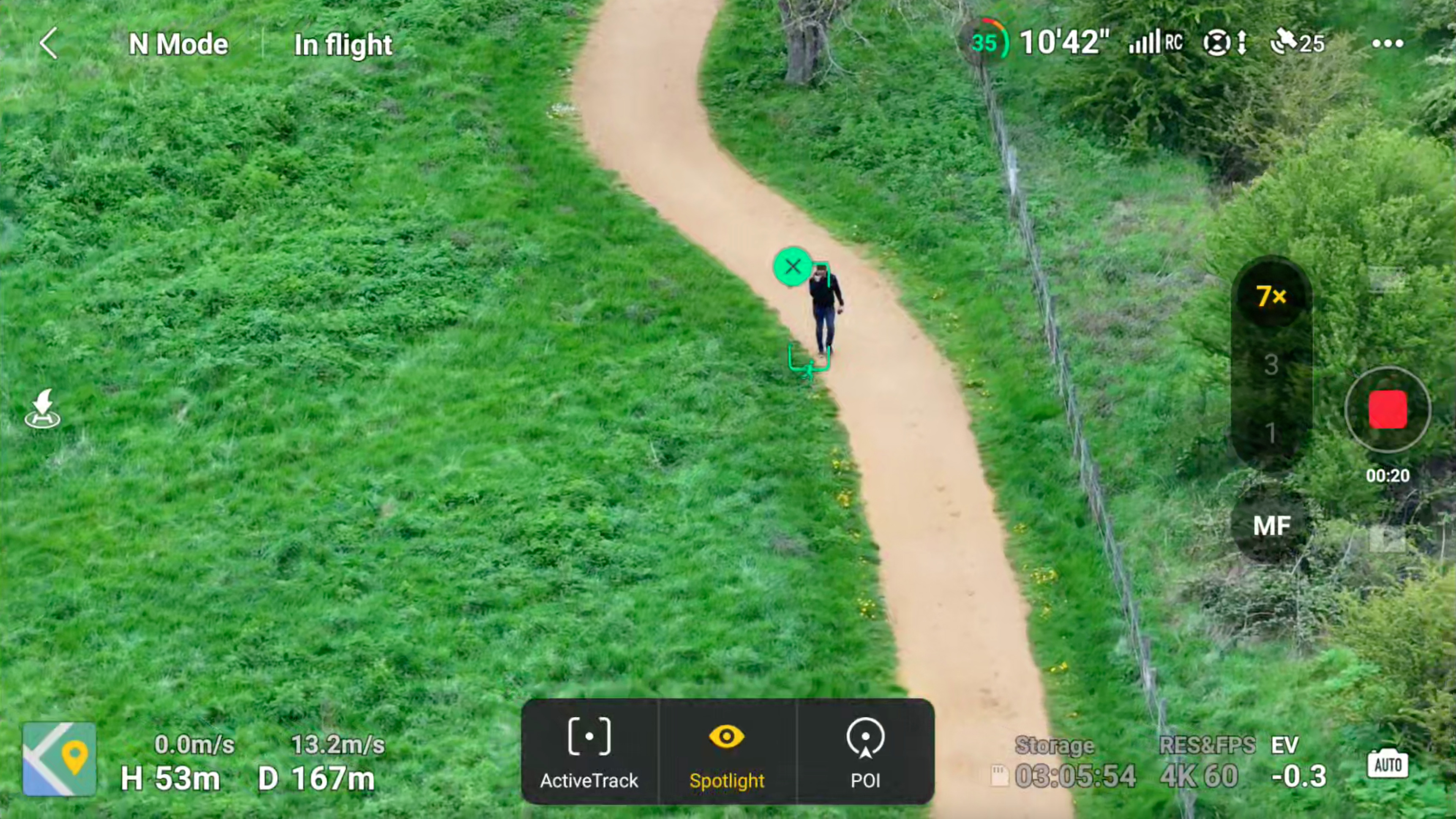
Plus, of course, DJI's existing subject tracking and orbiting features are there too and they're all very good. Sure, the Skydio can avoid more trees, FPV style, but for most shots keeping the subject in the frame is the real trick and the Mavic 3 Pro is able to do this well. It can even manage some of these features with the zoom cameras – but not the Active Track (in which the drone follows the subject and avoids collisions as it goes). Presumably, it needs the widest field of view possible, which makes sense.

Performance
Capturing images with the Hasselblad 20-megapixel camera is rewarding. We'd have been interested to see a higher resolution, but the Night Mode no doubt benefits from the relatively large pixels. We don't have a lot new to say about the 24mm EFL camera except that, well, it's great. It still lacks a mechanical shutter, which is more of an issue for orthographers, but the specialist Mavic 3E Enterprise has them covered.
The medium tele is a great camera, and 70mm EFL is a very useful length in orbital shots of people or vehicles. Our test had some long shots, so perhaps not the best testing scenario, but we got sharp crisp video and stills with – crucially – very little evidence of the vibration inevitable at 166mm EFL. At that range the image isn't up to the same quality as the wide lens; it is softer and has less dynamic range. But it is also clearly an improvement on the original Mavic 3.
From a creative perspective, the less said about the digital zoom mode the better. It is a useful tool to have at your disposal but we like that DJI has ring-fencing it into an Explore mode to prevent accidentally blurring shots. In operation having three cameras will sometimes require you to take a beat – which is fine, since the battery life is still the right side of 40 minutes (and even allowing time to take off and return, plus some energetic flying, will be 30 minutes of useful time).
We tested the drone with the Pro controller – included in the Mavic 3 Pro Fly More kit. This is Android-based and has a larger, brighter screen and fold-out antenna compared to the DJI RC.
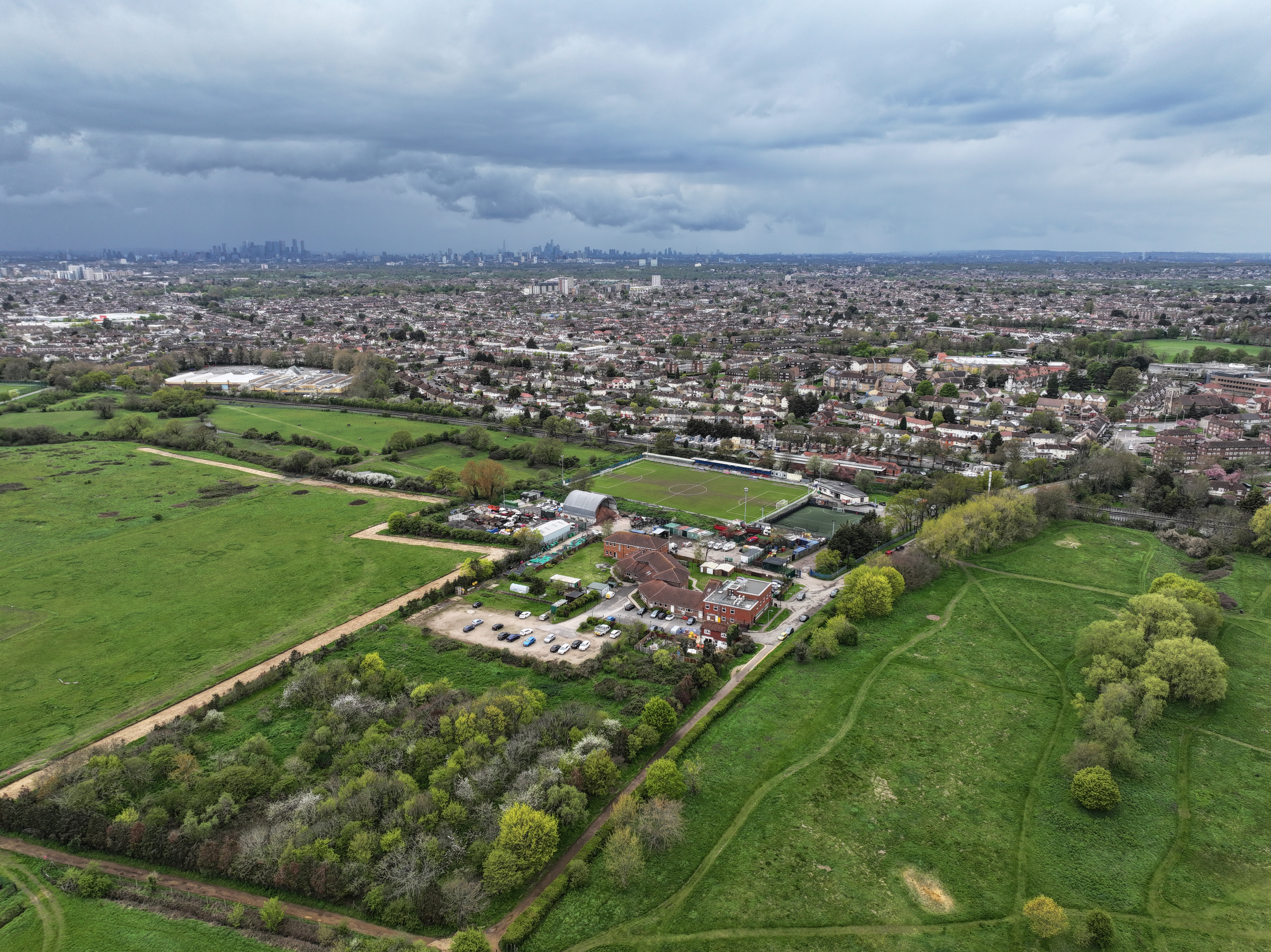
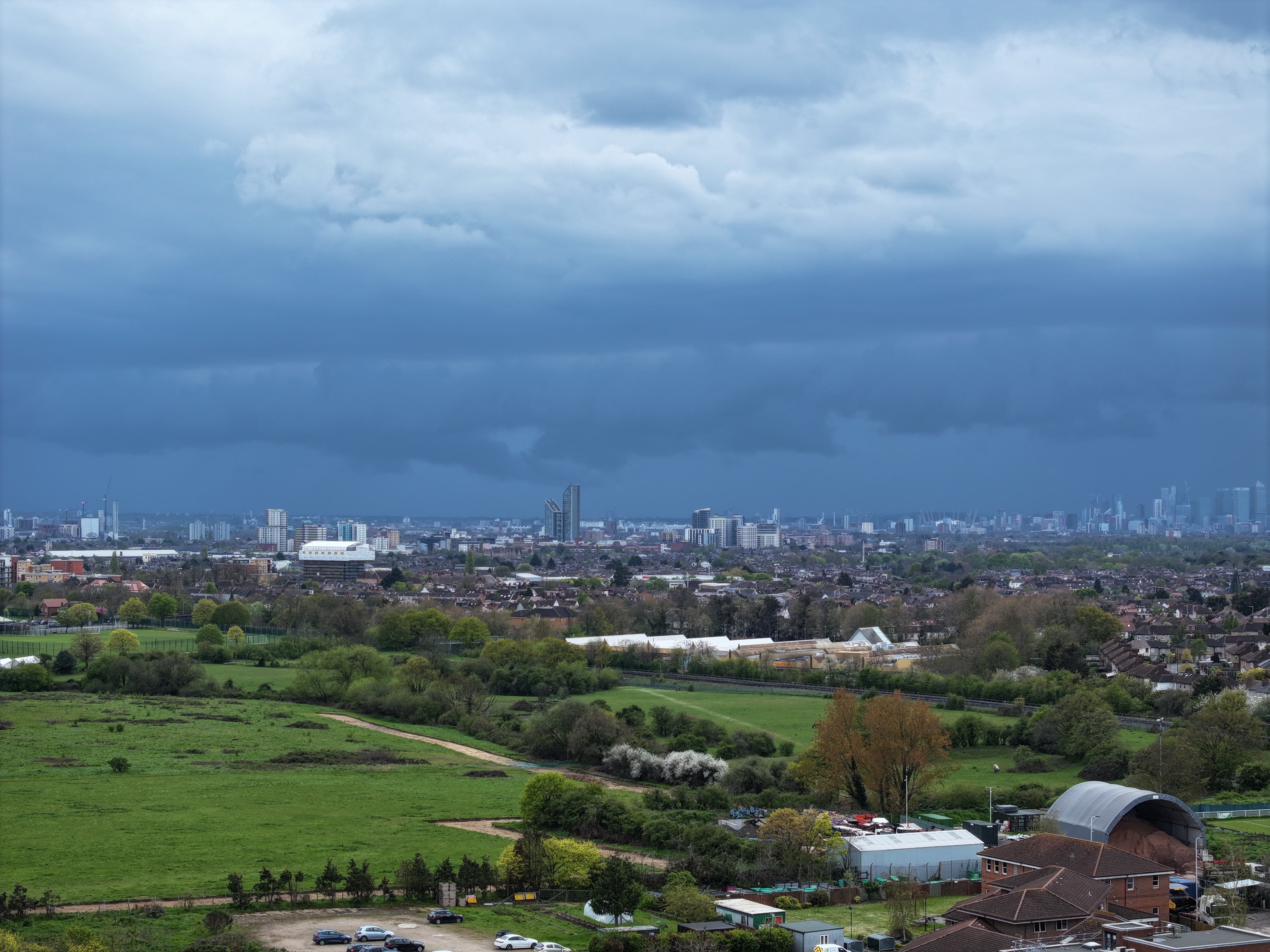

Our sample video shows some clips from the different cameras on the Mavic 3 Pro caught, admittedly, in somewhat inclement weather on our testing day.
Verdict
We've always liked the Mavic 3, and we've seen the sense in everything DJI has done with it. We liked the Mavic 3 Classic for creatives looking to save money and disinterested in the less-than-perfect telephoto lens in the original Mavic 3. Sure it did the job for inspections, but it wasn't up to the job for quality video.
What's exciting here is that, finally, there is an altogether more cohesive, and powerful, tool for creatives. Sweeping orbital telephoto shots are some of the most dramatic a drone can achieve, and now through the choice of distance and an improved camera this drone genuinely offers a significant step forward, and at 7x is clearly pushing the limits for the size.
We'd be happier if the cameras were all fully integrated, so you didn't need to remember the limitations of each (though the app does help). That said, they do play nicer than before and the other software improvement – waypoints – combine to make this a spectacularly versatile imaging tool.
Overall the advantages of this drone outweigh any irritations – and concerns about the price. In fact compared to the Inspire 3 it looks like a bit of a bargain, and many operators, especially those working single-handedly, will be able to create video which most clients will be just as impressed with.
The latest pricing can be found on DJI.com.
Read More: For more on the latest in drone technology check out our guides to the best camera drones and best DJI drones.







